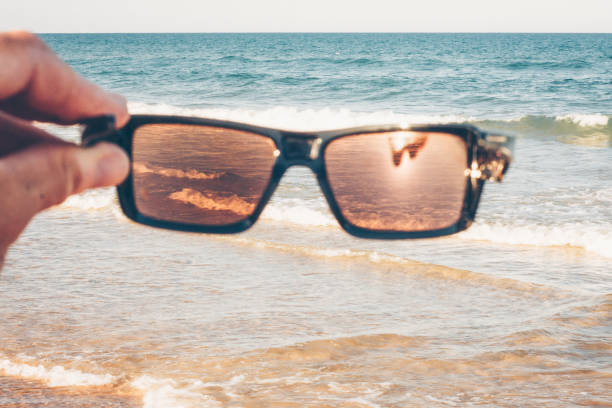As the sun sets and darkness blankets the road, driving at night can become a challenging task. Reduced visibility, blinding headlights, and the inherent dangers of low-light conditions make nighttime driving a concern for many. Fortunately, technology has paved the way for specialized eyewear designed to enhance your nighttime journey. In this in-depth exploration, we will delve into the various types of special glasses crafted for night driving and the remarkable functions that set them apart, all while shedding light on the path to safety and clarity.
The Challenges of Nighttime Driving
Before delving into the world of specialized glasses, it’s crucial to understand the challenges that drivers face when navigating roads after sundown. These challenges include:
- Reduced Visibility: Darkness limits our ability to perceive objects and obstacles on the road. Pedestrians, cyclists, and animals can become nearly invisible without proper illumination.
- Glare: Oncoming headlights, especially those equipped with high-intensity discharge (HID) and LED lights, can produce intense glare. This glare can be blinding and significantly impair a driver’s vision.
- Fatigue and Eye Strain: Driving at night can be mentally and physically taxing, leading to fatigue and eye strain. Prolonged exposure to bright lights and darkness can cause discomfort and reduced alertness.
- Depth Perception: Judging distances and the relative speed of vehicles can be more challenging at night, increasing the risk of accidents.
- Adverse Weather: Rain, fog, and snow can exacerbate the challenges of nighttime driving, further reducing visibility.
Given these challenges, it’s no surprise that specialized glasses for night driving have become increasingly popular, offering features designed to address these issues and improve safety.
Types of Special Glasses for Night Driving
Anti-Glare Glasses:

- Special Function: Anti-glare glasses, also known as anti-reflective (AR) glasses, are designed to reduce glare from oncoming headlights and streetlights. They have a coating that minimizes reflections, enhancing visibility in the presence of bright lights.
- How They Work: The anti-glare coating on the lenses helps to prevent reflections and halos around light sources, reducing the discomfort caused by glare. This coating also improves the clarity of your vision by allowing more light to pass through the lenses.
Yellow-Tinted Glasses:

- Special Function: Yellow-tinted or amber glasses are renowned for their ability to enhance contrast and reduce the scattering of blue light. This makes objects stand out more against dark backgrounds and helps reduce glare.
- How They Work: The yellow tint filters out some of the blue light that can cause visual discomfort at night. By reducing blue light, these glasses can create a clearer and more comfortable viewing experience.
Polarized Glasses:

- Special Function: Polarized glasses are equipped with lenses that help reduce glare from reflections off wet roads, car windows, and other surfaces. They excel in reducing glare caused by the low-angle sun during sunrise and sunset.
- How They Work: Polarized lenses contain a special filter that blocks horizontally oriented light waves, such as glare from water or pavement. This filtering process reduces the intensity of reflected light and minimizes glare.
Photochromic Glasses:

- Special Function: Photochromic glasses have lenses that automatically adjust their tint based on the level of UV light. They transition between clear and tinted states, making them suitable for both day and night driving.
- How They Work: When exposed to UV light, the lenses in photochromic glasses darken to protect your eyes from excessive brightness. At night or in low-light conditions, they return to a clear state for unobstructed vision.
HD Vision Glasses:

- Special Function: Glasses marketed as “HD vision” or “high-definition” are designed to improve visual clarity and reduce glare, making them suitable for night driving and other low-light conditions.
- How They Work: These glasses often feature special coatings that enhance contrast and reduce glare, improving overall visual acuity.
Choosing the Right Glasses for Night Driving
Selecting the most suitable glasses for your nighttime driving needs requires careful consideration of several factors:
- Specific Needs: Identify your particular vision challenges during nighttime driving, such as glare sensitivity or difficulty discerning objects. This will help you choose the glasses that address your unique concerns.
- Quality: Opt for high-quality glasses with reputable coatings that effectively reduce glare and enhance clarity. Cheap, subpar options may not provide the desired benefits and could even distort your vision.
- Comfort and Fit: Ensure that the glasses fit comfortably on your face and do not obstruct your peripheral vision. An uncomfortable or ill-fitting pair can be distracting and counterproductive.
- Prescription: If you require prescription glasses, consider getting specialized lenses with anti-glare, polarized, or photochromic features to improve your night driving experience.
- Regulations: Check local regulations regarding the use of specialized glasses while driving, as some regions may have restrictions on the types of lenses allowed.
Benefits Beyond Night Driving
Specialized glasses for night driving offer benefits that extend beyond improved visibility on the road. They can reduce eye strain and discomfort during prolonged nighttime journeys, contributing to a more relaxed and alert driving experience. Additionally, some of these glasses are versatile enough to be worn during the day, offering continuous vision enhancement for various lighting conditions.
Conclusion
Navigating the roads after dark need not be a daunting endeavor. Specialized glasses for night driving are designed to address the unique challenges posed by low-light conditions, reducing glare, enhancing contrast, and promoting safety. Whether you opt for anti-glare glasses, yellow-tinted lenses, polarized